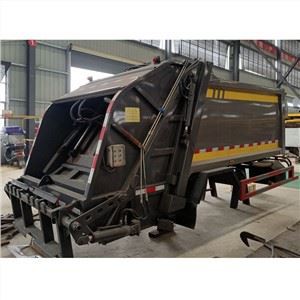Introduction
Semi gas tanks are a crucial component of a semi-truck’s fuel system. These tanks are specifically designed to store diesel fuel, which powers the heavy-duty engines of these large vehicles. In this article, we will delve into the various aspects of semi gas tanks, including their design, functionality, maintenance, types, and best practices for usage. Whether you are a truck driver, a fleet owner, or simply curious about how these systems work, this guide will equip you with all the knowledge you need.
1. What is a Semi Gas Tank?
A semi gas tank, also known as a fuel tank, is a storage unit located on the chassis of a semi-trailer truck. This tank holds the diesel fuel necessary for the operation of the truck’s engine. Unlike regular gas tanks found in smaller vehicles, semi gas tanks are typically larger and built to meet the demands of long-haul trucking.
1.1 Importance of Semi Gas Tanks
Without a properly functioning semi gas tank, a truck cannot operate efficiently. These tanks not only store fuel but also play a role in the vehicle’s overall weight distribution and safety.
1.2 Key Functions
- Fuel Storage: Holds a significant amount of diesel fuel for long trips.
- Weight Distribution: Designed to ensure the truck’s balance and stability on the road.
- Security Features: Often equipped with locks and anti-theft measures.
2. Types of Semi Gas Tanks
Semi gas tanks come in various shapes, sizes, and materials. The choice of type depends on factors such as the truck model, the weight it will carry, and the distance of travel.
2.1 Aluminum Tanks
Aluminum tanks are lightweight and resistant to corrosion, making them a popular choice for modern trucks.
2.2 Steel Tanks
Steel tanks are heavier and more robust but may be prone to rust if not properly maintained.
2.3 Composite Tanks
These are made from a combination of materials, typically offering a balance between weight and durability.
2.4 Capacity and Size Variations
Semi gas tanks can vary in capacity from 50 to 150 gallons or more, depending on the truck’s specifications. Fleet operators often choose larger tanks for long-distance hauls, while regional trucks may opt for smaller capacities.
3. How Semi Gas Tanks Work
The operation of a semi gas tank is straightforward but crucial for the truck’s performance. Here’s how they work:
3.1 Fuel Inlet and Outlet
Fuel enters the tank through the filler neck and is drawn out via the outlet to the engine when needed.
3.2 Fuel Pumps
In most systems, an electric fuel pump is employed to transport fuel from the tank to the engine, ensuring optimal pressure for performance.
3.3 Fuel Filters
Before reaching the engine, the fuel goes through filters to remove impurities and contaminants.
4. Maintenance Tips for Semi Gas Tanks
Regular maintenance is essential to ensure the longevity and efficiency of a semi gas tank.
4.1 Regular Inspection
Drivers should inspect the tank regularly for signs of leaks, corrosion, or damage. Early detection can prevent costly repairs.
4.2 Cleaning the Tank
Cleaning the inside of the tank periodically is vital to eliminate sediment build-up that can clog filters.
4.3 Protecting from Corrosion
Using corrosion inhibitors can prolong the life of steel tanks, while keeping aluminum tanks clean can prevent oxidation.
5. Common Issues with Semi Gas Tanks
While semi gas tanks are designed for rugged use, they can encounter several issues over their lifespan.
5.1 Leaks
Leaking fuel tanks can be dangerous. If you notice a fuel smell or visual signs of leakage, it is crucial to address it immediately.
5.2 Fuel Contamination
Water and dirt can enter the tank, affecting engine performance. Regular checks and filter replacements are necessary.
5.3 Damage from Accidents
Accidents can severely impact the tank’s structure. Having a proper post-accident inspection routine can help minimize risks.
6. Best Practices for Fueling Semi Gas Tanks
Fueling a semi gas tank might seem straightforward, but there are best practices to follow for safety and efficiency.
6.1 Safety Procedures
- Turn off the engine before fueling.
- Use proper grounding methods to avoid static electricity.
6.2 Choosing Quality Fuel
Using high-quality diesel fuel can enhance engine performance and reduce wear and tear on the fuel system.
6.3 Monitoring Fuel Levels
Keep an eye on fuel levels to avoid running completely dry, which can cause airlock issues in the fuel system.
7. Fuel Efficiency Tips for Semi-Truck Operators
Improving fuel efficiency can lead to significant cost savings over time.
7.1 Route Planning
Planning efficient routes can reduce fuel consumption. Utilize GPS technology to find the best paths.
7.2 Speed Management
Driving within optimal speed limits can improve fuel efficiency. Avoid rapid acceleration and heavy braking.
7.3 Regular Maintenance
Keeping the engine and fuel system in top condition through regular maintenance will ensure better fuel economy.
8. Semi Gas Tank Regulations and Compliance
Understanding regulatory requirements related to semi gas tanks is crucial for all operators.
8.1 DOT Regulations
According to the Department of Transportation (DOT), there are strict regulations regarding the design, installation, and maintenance of fuel tanks on semi-trucks.
8.2 Environmental Considerations
Operators must also be aware of local and federal environmental regulations concerning fuel tanks, especially regarding spills and releases.
8.3 Penalties for Non-compliance
Non-compliance with regulations can result in hefty fines and penalties, making it essential for operators to stay informed and adhere to all laws.
9. The Future of Semi Gas Tanks
As technology progresses, semi gas tanks are evolving. Here are some trends to watch for in the coming years.
9.1 Alternative Fuels
With the rise of electric and alternative fuel sources, semi gas tanks may see designs evolving to accommodate these changes.
9.2 Advanced Materials
Research into new materials could lead to lighter, more durable tanks, enhancing overall fuel efficiency and versatility.
9.3 Enhanced Monitoring Systems
Smart technologies that monitor fuel levels and detect leaks in real-time are becoming increasingly common, presenting new opportunities for safety and efficacy.
10. Frequently Asked Questions (FAQ)
10.1 What is the average lifespan of a semi gas tank?
The lifespan of a semi gas tank can vary significantly, but with proper maintenance, they can last 10-15 years or more.
10.2 Can I replace my semi gas tank myself?
While it is possible, it is recommended to have a professional perform the replacement to ensure safety and compliance with regulations.
10.3 How do I know if my fuel tank is leaking?
Look for visual signs of fuel near the tank, listen for hissing sounds, or smell fuel vapors around the area.
10.4 What should I do if I suspect fuel contamination?
If you suspect fuel contamination, stop using the fuel immediately and have the tank inspected and cleaned.
10.5 Are there specific fuels I should avoid in my semi gas tank?
Avoid using low-quality or unregulated fuels, as they can lead to engine performance issues and costly repairs.
10.6 What precautions should I take during winter for my semi gas tank?
Use anti-gel additives to prevent fuel from gelling in cold temperatures and ensure your tank is clean to avoid blockages from wax build-up.



